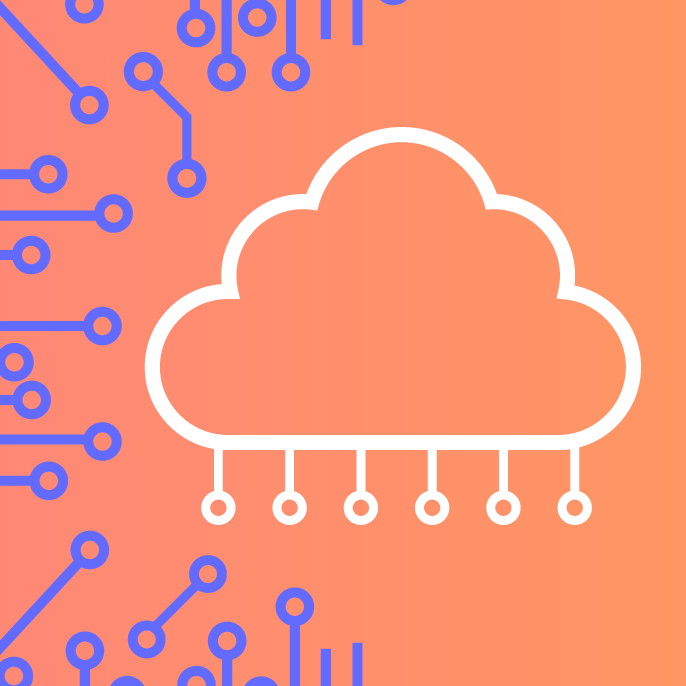
The Basics and Benefits of Network Security
Lucid Content
Reading time: about 8 min
Topics:
If you’ve ever watched any kids’ programming, entered a public school, or been to a library, chances are that you’ve heard the adage “Knowledge is power.” Access to information has always made a difference, and at no time is that truer than in the digital age.
Today, businesses have access to more valuable information than ever before—and protecting that information is vital to business success. Effective network security acts as a gatekeeper to that information, preventing unauthorized access, misuse, modification, or alteration of a computer network and its resources. Here we’ll outline what network security means, why it’s so important to your business, and which types of network security may be applicable to your business.
What is network security?
Network security is any system, device, or action designed to protect the safety and reliability of a network and its data. Like a fence around private land or a lock on a door, network security manages access to a network by stopping a variety of threats from entering and spreading through a system.
Cybersecurity aims to protect Internet-connected systems and networks from initial attacks like a hacker or a virus. Network security is focused on protecting files, documents, and information from those types of attacks. Most commonly, network security starts with authentication in the form of a username and password, but it can also employ other tools like firewalls, anti-virus programs, and virtual private networks (VPNs) to protect the network’s information.
Top 4 benefits of network security
For today’s business, digitization is no longer a savvy option or competitive advantage—it’s a necessity. As more and more companies undergo digital transformation, the security of a digital infrastructure should be at the top of every operations manager’s priority list.
Secure and reliable networks protect not just organizational interests and operations, but also any client or customer who exchanges information with the organization, in addition to the general public. And if information protection isn’t cause enough to invest in network security, consider the cost: according to Solarwinds MSP, the global cost of dealing with damage caused by cybercrime is estimated to reach $6 trillion by 2021, with the average cause of a cyberattack totaling upwards of $1 million.
If this isn’t motivation enough, here’s a reminder of the top benefits your company stands to gain from improved network security.
Builds trust
Security for large systems translates to security for everyone. Network security boosts client and consumer confidence, and it protects your business from the reputational and legal fallout of a security breach.
Mitigates risk
The right network security solution will help your business stay compliant with business and government regulations, and it will minimize the business and financial impact of a breach if it does occur.
Protects proprietary information
Your clients and customers rely on you to protect their sensitive information. Your business relies on that same protection, too. Network security ensures the protection of information and data shared across the network.
Enables a more modern workplace
From allowing employees to work securely from any location using VPN to encouraging collaboration with secure network access, network security provides options to enable the future of work. Effective network security also provides many levels of security to scale with your growing business.
Types of network security
Access control
Your network may have many visitors, but not all of them should have the same level of access. Access control is much like it sounds; it controls access to sensitive areas within the network. By recognizing each user and each divide, you can limit access to only known users and devices and block or limit access to unrecognized devices and users.
Antivirus and anti-malware software
Malware, short for “malicious software,” takes many forms to attack your network, including viruses, worms, Trojans, spyware, or ransomware. While some malware acts immediately to steal or corrupt data, other malware is more stealthy, lying dormant before secretly infiltrating systems and information.
Top antivirus and anti-malware software programs will not just scan and monitor networks for malware upon entry, but will continuously monitor the network for suspicious behavior and anomalies to help mitigate risk and protect against threats.
Application security
Network security involves not just the integrity of your own systems but the integrity of the systems you use to support your operations. Each device, software product, and application used in your network must be vetted and updated to prevent infiltration via a third-party network. Application security is the practice of protecting against any vulnerabilities caused by integrating third-party systems and applications.
Behavioral analytics
To identify behavioral anomalies, network administrators must have a clear picture of how users typically behave within the network. Behavioral analytics tools are designed to identify risky user behavior that typically precedes a potential security breach. Identifying threats early on gives network security administrators the best chance of mitigating any potential threats.
Cloud security
Many businesses are moving to the cloud to benefit from increased efficiency, reduced costs, integrated tools, and easier collaboration, especially between remote employees. However, cloud migration comes with its own share of challenges—when users can connect directly to the Internet, IT professionals lose the visibility into what employees are doing and increase the risk of data being exposed. To combat this issue, cloud computing security may include encryption and identify management.

Learn about additional challenges that come with moving your business to the cloud.
Read moreData loss prevention (DLP)
Data loss prevention (DLP) technologies prohibit staff and network users from sharing sensitive information, whether accidentally or maliciously, with users outside of the network. Data loss can include uploading, downloading, and forwarding private files, printing private information, and sharing access codes to classified data.
Distributed denial of service prevention (DDoS)
An increasingly common threat, Distributed Denial of Service (DDoS) attacks causes systems to crash by inundating them with numerous attempts to connect to the work. DDoS prevention tools peruse incoming traffic for illegitimate connection requests and direct traffic away from your network firewalls.
Email security
Email security breaches are the most common threat to a network’s security. Using personal information and sophisticated marketing and social engineering tactics allows attackers to deceive recipients into accepting phishing campaigns, downloading malware, and following suspicious links. Email security applications block incoming attacks, filter potential threats, and prevent outgoing emails from sharing certain data and spreading malware through users’ contact lists.
Firewalls
Firewalls act as a boundary between your trusted internal system and unverified external networks. Think of a firewall as a first line of defense—they protect your network by monitoring incoming against an established set of network rules and policies.
Intrusion prevention systems (IPS)
Intrusion prevention systems (or IPS) scan system traffic to actively block threats. They may do this by tracking the progression of suspicious files and malware, mining complex digital data, and ultimately prohibiting the spread of outbreaks and preventing system reinfection.
Mobile device security
As more companies embrace BYOD and personal mobile device applications, the exchange of sensitive information via remote networks is set to increase dramatically. This shift presents a new threat to security administrators: mobile device security performs an essential task by limiting access to systems and preventing hackers from accessing sensitive information via vulnerable mobile networks.
Network segmentation
Network segmentation is a highly effective way to improve the security of your organization. By separating network traffic into different zones or data sets with similar compliance requirements. This security measure streamlines the work of system security personnel by making it easier to apply and enforce security policies, limit access and authorization to certain users, or offer protection in BYOD (bring-your-own-device) environments.
Security information and event management (SIEMs)
SIEM technologies, similar to intrusion prevention systems (IPS), provide real-time analysis of network traffic and historical data, providing system admins with a complete view of network activity. This information is then combined with intrusion detection systems, giving cybersecurity personnel the ability to identify and respond to potential threats.
VPN
Virtual private networks (or VPNs) offer network protection for remote work by encrypting the contact between an endpoint to a network or system, typically over the Internet. Most often, remote-access VPNs operate by using Internet Protocol Security (IPsec) or Secure Sockets Layer (SSL) to authenticate communications from devices to secure networks.
Web security
Web security functions by limiting access to certain websites that may contain malware. By controlling web use, it can also block certain web-based threats and protect against malicious sites. Web security can also refer to measures taken to protect your website or web gateway.
Wireless security
Wireless security refers to any measure taken to protect against susceptibilities created from the installation of wireless systems like the especially vulnerable wireless local area network (LAN).
Establishing a network security plan that’s right for your organization doesn’t have to be complicated. Tools like visual network maps can help you comprehensively address your threats and prevent any threats in the future. Research and preparation is the best way to prevent malicious attacks, and a thorough network security solution is the best way to protect your organization’s cyber-infrastructure.
Lucidchart can help your organization visualize technical systems to demonstrate compliance and plan a secure infrastructure.
See howAbout Lucidchart
Lucidchart, a cloud-based intelligent diagramming application, is a core component of Lucid Software's Visual Collaboration Suite. This intuitive, cloud-based solution empowers teams to collaborate in real-time to build flowcharts, mockups, UML diagrams, customer journey maps, and more. Lucidchart propels teams forward to build the future faster. Lucid is proud to serve top businesses around the world, including customers such as Google, GE, and NBC Universal, and 99% of the Fortune 500. Lucid partners with industry leaders, including Google, Atlassian, and Microsoft. Since its founding, Lucid has received numerous awards for its products, business, and workplace culture. For more information, visit lucidchart.com.
